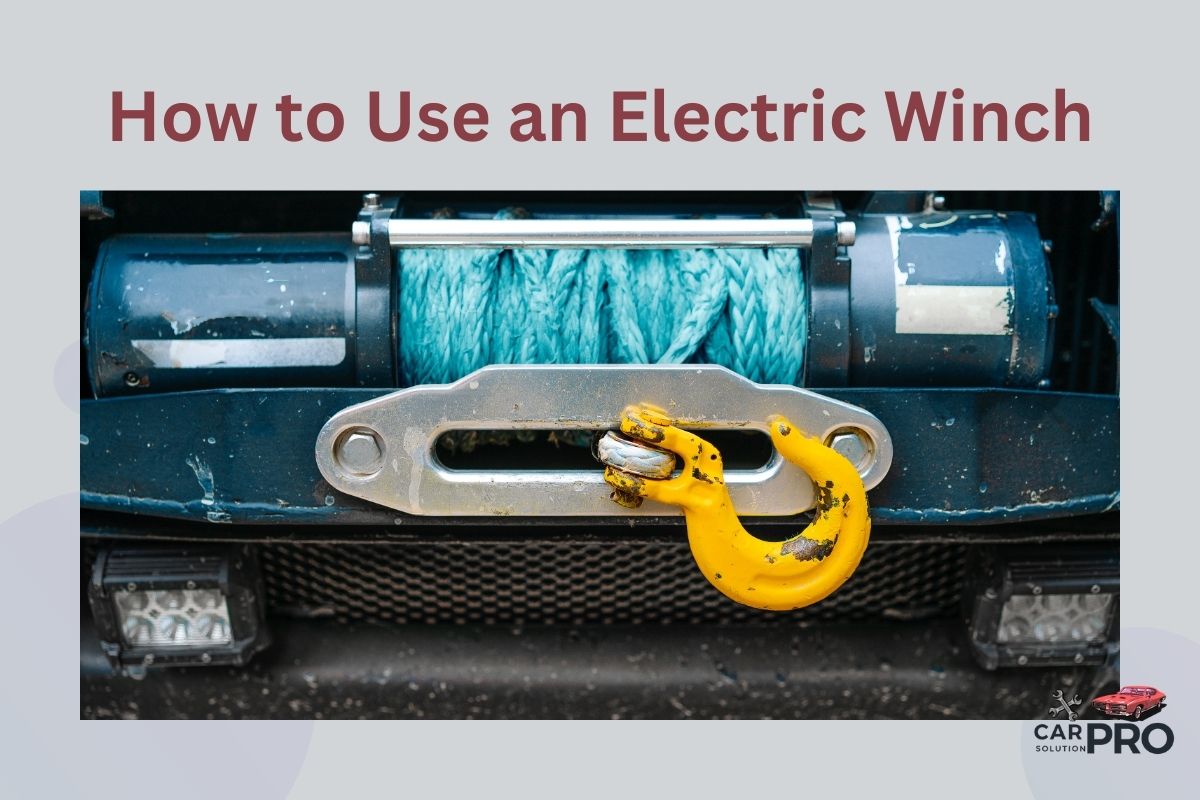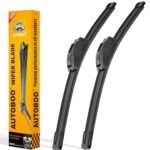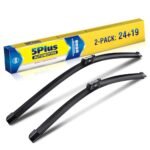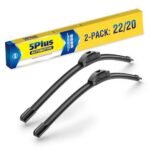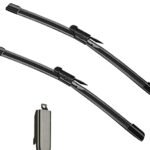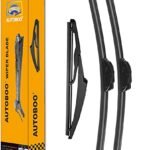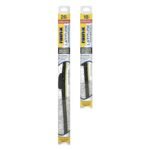Electric winches are powerful tools for off-road enthusiasts and rescue operations. These devices can pull heavy loads and get vehicles unstuck from tricky situations. To use an electric winch, you need to mount it securely, connect it to your vehicle’s battery, and operate it with a remote control.
Learning to use an electric winch safely is crucial. It involves understanding the correct techniques for hooking up loads and managing tension on the wire. Proper gear and safety precautions are a must when using these tools.
Electric winches come in different sizes and strengths. Picking the right one for your needs is important. You’ll want to think about the weight you’ll be pulling and how often you’ll use the winch.
Key Takeaways
- Electric winches require proper mounting and connection to a vehicle’s battery
- Safety gear and correct techniques are essential for winch operation
- Choose a winch based on your specific pulling needs and usage frequency
Understanding Electric Winches
Electric winches are powerful tools used for pulling and lifting heavy loads. They consist of key components and come in different types to suit various needs. Knowing their power and capacity specs helps choose the right winch.
Components and Design
Electric winches have several main parts. The motor provides power to turn the drum. The drum holds and winds the cable or rope. A gear system connects the motor to the drum.
Control systems let users operate the winch safely. Most have handheld remotes for distance control. Brakes keep the load secure when not moving.
The frame holds everything together. It mounts to a vehicle or fixed spot. Some winches use synthetic rope, while others use steel cable.
Different Types of Electric Winches
Electric winches come in various types for different jobs. Recreational winches are popular for off-road vehicles. They help get stuck vehicles out of mud or sand.
Industrial winches handle heavier loads. They’re used in factories and warehouses. Marine winches are made for boats and docks.
Utility winches serve many purposes. They can be mounted on trucks or trailers. Some winches are made for pulling, while others are for lifting.
Power and Capacity Specifications
Winch power is measured in horsepower or watts. More power means faster pulling and heavier loads. Capacity refers to how much weight a winch can pull.
Common capacities range from 2,000 to 12,000 pounds. The first layer of cable on the drum has the highest pulling power. As more cable is used, the power decreases.
Voltage is another key spec. Most vehicle winches use 12V or 24V. Some industrial models use higher voltages. Duty cycle tells how long a winch can run before needing to cool down.
Installation of an Electric Winch
Installing an electric winch involves two main steps: securely mounting the winch and making proper electrical connections. These tasks require careful planning and execution to ensure safe and reliable operation.
Mounting the Winch
To mount an electric winch, start by choosing a sturdy mounting location. Many vehicles have winch mounting plates designed for this purpose. If not, install a heavy-duty plate that can handle the winch’s pulling force.
Align the winch with the mounting holes and insert the bolts. Use lock washers to prevent loosening from vibrations. Tighten the bolts evenly, following the manufacturer’s torque specifications.
Check that the fairlead aligns properly with the winch drum. This ensures the cable will spool correctly during use. Adjust if needed before final tightening.
Electrical Connections and Wiring
Start by disconnecting the vehicle’s battery to prevent accidental shorts. Mount the solenoid in a protected location near the winch, keeping it away from heat sources and moving parts.
Run heavy-gauge power cables from the battery to the solenoid, then to the winch motor. Use cable sizes recommended by the winch manufacturer. Secure the cables along the frame, avoiding sharp edges and hot components.
Install a circuit breaker or fuse near the battery for overload protection. Connect the winch control switch, ensuring it’s easily accessible from the driver’s position.
Double-check all connections for tightness and proper insulation. Reconnect the battery and test the winch’s operation, verifying both forward and reverse functions work correctly.
Operating an Electric Winch
Electric winches are powerful tools for pulling heavy loads. Proper operation ensures safety and effectiveness. Let’s explore the key steps and precautions for using an electric winch.
Preparing to Winch
Before starting, inspect the winch and cable for damage. Check that the winch is securely mounted to a solid surface. Make sure the battery is charged and connections are tight.
Clear the area of bystanders and obstacles. Position the vehicle with the winch facing the load. Engage the parking brake and use wheel chocks for extra stability.
Put on protective gloves to handle the cable safely. Unspool enough cable to reach the anchor point. Choose a strong tree or another vehicle as an anchor.
Attach a tree trunk protector if using a tree. Connect the winch hook to the anchor point using a D-shackle or bridle.
Safety Measures
Safety is crucial when operating an electric winch. Always read the manufacturer’s instructions before use.
Never stand close to a tensioned winch line. Keep at least 1.5 times the cable length away from the winch during operation.
Use a cable damper or heavy blanket over the winch line. This reduces the risk of injury if the cable snaps.
Never use the winch to lift people or loads directly overhead. It’s designed for horizontal pulling only.
Wear safety glasses and avoid loose clothing that could get caught in moving parts. Keep hands clear of the fairlead and drum while the winch is running.
Step-by-Step Winching Process
- Engage the winch clutch to connect the motor to the drum.
- Connect the winch remote control.
- Start your vehicle’s engine to maintain battery power.
- Begin winching slowly, checking that the cable spools evenly on the drum.
- Increase power gradually, keeping tension on the line.
- Guide the cable onto the drum if needed, using the hand-over-hand technique.
Stop winching periodically to prevent overheating. Let the winch cool down for a few minutes if it feels hot.
Once the load is moved, secure it independently of the winch. Never rely on the winch to hold a load in place long-term.
Disconnect the winch hook and carefully respool the cable, guiding it evenly across the drum.
Maintenance and Troubleshooting
Regular upkeep and quick problem-solving are key to keeping an electric winch in top shape. These steps help prevent issues and ensure the winch is ready when needed.
Regular Maintenance
Cleaning and lubricating an electric winch is crucial. Users should wipe down the winch after each use to remove dirt and debris. They should also grease moving parts regularly.
Inspecting the cable or rope is important. Look for fraying, kinks, or wear. Replace damaged cables promptly to avoid accidents.
Check electrical connections often. Loose or corroded wires can cause winch failure. Tighten connections and clean any corrosion.
Battery maintenance is vital. Keep the battery charged and the terminals clean. A weak battery can lead to poor winch performance.
Common Issues and Solutions
Motor problems are a frequent concern. If the winch won’t turn on, check the battery and connections first. A clicking sound usually means a dead battery.
Overheating can occur during heavy use. Let the winch cool down if it gets too hot. Using it in short bursts can help prevent overheating.
Cable issues may arise. If the cable bunches up or doesn’t spool evenly, it needs to be re-spooled. Proper tension is key when winding the cable back onto the drum.
Control switch problems can happen. If the winch doesn’t respond, test the switch. Replacing a faulty switch is often a simple fix.
Advanced Winching Techniques
Electric winches can do more than simple straight pulls. With the right know-how, you can tackle tricky situations and increase pulling power.
Leveraging Pulley Block Systems
Pulley blocks boost winch power and change pull direction. A single pulley can double the winch’s pulling force. This is great for heavy loads or stuck vehicles.
To set up, attach the pulley to an anchor point. Run the winch cable through the pulley and back to your vehicle. Hook it to a strong point on the frame.
This setup splits the load between two cable sections. It cuts speed in half but doubles pulling strength. For even more power, use multiple pulleys.
Advanced winching methods like this help in tough spots. Always check your gear’s weight limits before trying.
Winching at an Angle
Sometimes a straight pull isn’t possible. Trees, rocks, or other obstacles may block the path. That’s when angled winching comes in handy.
Start by finding a solid anchor point off to the side. Attach a tree saver strap to protect living trees. Use a snatch block to change the cable’s direction.
The winch will pull at an angle, but the vehicle will move forward. This technique works well for getting around corners or out of tight spots.
Be careful of sideways forces on your vehicle. Too much angle can tip it over. Use a spotter to watch for problems and guide the driver.
Frequently Asked Questions
Electric winches require proper rigging, operation, and maintenance for safe and effective use. Key considerations include vehicle setup, tension control, remote operation, and regular servicing.
What is the correct way to rig a vehicle for recovery with an electric winch?
Proper rigging starts with securing the winch to a solid anchor point. Use a tree saver strap or strong anchor plate. Attach the winch hook to the vehicle’s frame or designated recovery points. Never hook to bumpers or axles.
Ensure the winch line is straight and centered. Use a snatch block if needed to change the pulling angle. Clear the area of bystanders and obstacles before starting the recovery process.
Can you operate an electric winch safely without using the remote control?
Operating a winch without a remote control is not recommended. The remote allows you to stand at a safe distance while winching. It provides better visibility and control over the operation.
If absolutely necessary, use extreme caution when operating the winch directly. Wear gloves and avoid loose clothing that could get caught in moving parts.
How do you maintain proper tension on a winch strap during use?
Maintaining proper tension is crucial for safe winching. Keep the winch line taut at all times. Avoid slack that can lead to jerking or cable damage.
Spool the line evenly across the drum. Guide it by hand if needed. Stop winching periodically to check tension and adjust as necessary.
What are the best practices for using a winch for sailing applications?
When using a winch for sailing, ensure it’s rated for marine use. Mount it securely to the boat’s deck or mast. Use marine-grade electrical connections to prevent corrosion.
Always wear gloves when handling winch lines. Be aware of changing loads due to wind and waves. Regularly inspect the winch and lines for wear or damage.
Is it necessary to have the vehicle’s engine running when operating the winch?
It’s generally recommended to keep the engine running while using an electric winch. This helps maintain battery charge and prevents draining. Winches draw significant power, especially under heavy loads.
If winching for extended periods, run the engine at a slightly elevated idle to ensure adequate power supply. Monitor battery voltage to avoid overloading the electrical system.
How should an electric winch be properly serviced and maintained for longevity and safety?
Regular maintenance is essential for winch longevity and safety. Inspect the winch before each use for loose connections or visible damage. Clean and lubricate moving parts according to manufacturer instructions.
Check the winch cable or synthetic rope for fraying or kinks. Replace if damaged. Test the winch periodically under no load to ensure smooth operation. Have it professionally serviced annually or after heavy use.
When you purchase a product through Amazon links on carsolutionpro.com, we may earn a small commission at no extra cost to you. This helps support the site and keep our content free. As an Amazon Associate, we earn from qualifying purchases made through our links.
